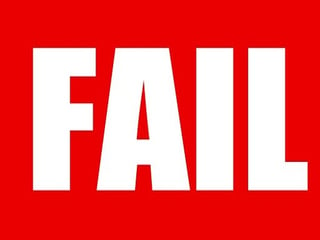
The pricing of your product or service is a key element in determining the profitability of your business. However it is not always easy to get it right. How do you make sure that money ends up in your pocket and you avoid those endless sleepless nights?
If your price is too high demand will reduce and you may price yourself out of the market. If your price is too low, your sales volume may not generate enough revenue to cover the costs associated with your business.
Price your products correctly and you can increase how much you sell, creating the foundation for a business that will prosper. Get your pricing strategy wrong and you may create problems that your business may never be able to recover from. There's no more important number than the one on your price tag - but you can't fix a pricing problem if you haven't set prices appropriately in the first place! Entrepreneurs even admit that they often go by a 'gut feeling' on price. Unfortunately, the gut often gets it wrong! "Entrepreneurs tend to keep prices too low," says Reed K. Holden, the co-author of The Strategy and Tactics of Pricing, a widely used text on the subject. "It's probably the toughest thing there is to do," says Charles Toftoy, associate professor of management science at George Washington University. "It's part art and part science."
No matter what type of product you sell, the price you charge your customers or clients will have a direct effect on the success of your business. Though pricing strategies can be complex, the basic rules of pricing are straightforward:
- All prices must cover costs and profits.
- The most effective way to lower prices is to lower costs.
- Review prices frequently to assure that they reflect the dynamics of cost, market demand, response to the competition, and profit objectives.
- Prices must be established to assure sales.
Your business could fail if you don't look out for these early warning signs:
1. Do your prices cover your costs/expenses?
Before setting a price for your product, you have to know the cost of running your business. If the price for your product or service doesn't cover costs, your cash flow will be cumulatively negative, you'll exhaust your financial resources, and your business will ultimately fail – you're in big trouble!
To determine how much it costs to run your business, include fixed expenses: property and/or equipment leases, loan repayments, stock, utilities, financial costs, and salaries/wages/commissions. Variable expenses include: seasonal fluctuations, the costs of markdowns, shortages, damaged merchandise, employee discounts and cost of goods sold.
Most important is to add profit in your calculation of costs. Treat profit as a fixed cost, like a loan payment or payroll – you are not in business just to break even!
2. Are you just 'hoping for the best'?
Because pricing decisions require time and market research, the strategy of many business owners is to set prices once and "hope for the best." However, such a policy risks profits that are elusive or not as high as they could be.
3. Have you got to grips with the basics?
When is the right time to review your prices? Do so if:
- You introduce a new product or product line
- Your costs change
- You decide to enter a new market
- Your competitors change their prices
- The economy experiences either inflation or recession
- Your sales strategy changes; or
- Your customers are making more money because of your product or service.
4. Do you take too much notice of your competitors?
If you are always looking over your shoulder at the competition and seeking to bring your own prices into line – or charge less – this can be dangerous. How do you know that your rivals are more clued up about pricing than you are? Is your product or service identical to that of the competition? If you undercut them, you risk starting a margin-killing price war. Of course it's healthy to keep an eye on the competition but remember that YOU may be offering additional value, additional service or your product may be perceived as higher quality. It's not always necessary to match or undercut your competitors.
5. Do you always consult with customers and salespeople before arriving at a price?
Customers, obviously, have a powerful incentive to get you to keep your prices as low as possible. In reality you just need to figure out which segment you should be targeting and price accordingly. Setting prices based solely on what your salespeople report back can lead to similar problems. "Salespeople want to close deals, and they use price as a way of doing that," says Holden. "But that can be inconsistent with the real need of the business - profitability."
6. Do you really know the 'value' of your product?
The right price for a product or service should rest on one thing - the value that a product or service provides. When determining your prices, says John Gourville, a marketing professor at Harvard University, the first question to ask is this: How much would a rational consumer be willing to pay for your product, assuming the consumer had a perfect understanding of its actual worth? While most business owners spend a good deal of time publicising the benefits of their products and services, they haven't calculated what the customer thinks these are worth in £s.
7. Are you under-pricing?
"Many businesses mistakenly under price their products attempting to convince the consumer that their product is the least expensive alternative hoping to drive up volume; but more often than not it is simply perceived as 'cheap'," says Laura Willett, a small business consultant. "Remember that consumers want to feel that they are getting their "money's worth" and most are unwilling to purchase from a seller they believe to have less value. "
8. Are you over-pricing?
On the flip side, overpricing a product can be just as detrimental since the buyer is always going to be looking at your competitors' pricing, Willett says. Pricing beyond the customer's desire to pay can also decrease sales. Charge a fair price and the consumer will be happy.
9. Do you fully understand your other business priorities?
Understand what you want out of your business when pricing your products. Aside from maximizing profits, it may be important for you to maximize market share with your product - that may help you decrease your costs or it may result in what economists call "network effects," i.e. the value of your product increases as more people use it. An excellent example of a product having network effect is Microsoft's Windows operating system. When more people began to use Windows over rival products, more software developers made applications to run on that platform.
10. Are you 'up to speed' with your revenue target?
You should also have a revenue target for how much of a profit you want your business to make. Take that revenue target, factor in your costs and you can come up with a price per product that you need to charge. If you only have one product, it's simple - estimate the number of units of that product you expect to sell over the next year. Then divide your revenue target by the number of units you expect to sell and you have the price at which you need to sell your product in order to achieve your goals.
If you have a number of different products, you need to allocate your overall revenue target by each product. Do the same calculation to arrive at the price at which you need to sell each product in order to achieve your financial goals. Try to have a budget action plan for your pricing that extends three to six months in the future.
11. Do you know where the market is heading?
OK, you're not clairvoyant but you can keep track of outside factors that will impact the demand for your product in the future. These factors can range from something as simple as long-term weather patterns to laws that may impact on future sales. That opens the door to raising and/or lowering prices for your products. First, you should understand what's already working. Analyze the profitability of your existing products; the goal is to find out which of your existing products are making money and which are losing money. You may be surprised at how many of your products are losing money - fix those ASAP. "People respect what you inspect."
12. Are your prices still calculated on the 'back of an envelope'?
Are you spending insufficient resources managing your pricing practices? Many companies resort to detrimental, simplistic pricing procedures such as cost-plus pricing, while others use highly sophisticated procedures and technologies to apply advanced pricing methods to really squeeze out the highest margin possible for all product and customer segments.
Conclusion
You owe it to yourself and to your business to be relentless in managing your product pricing. Remember, how you set the price of the products could be the difference between the success - or failure - of your business. Why not have a chat with us to discuss your pricing needs?
Related Posts
Why Your Pricing Strategy Is Failing And How To Fix It
7 Proven Ways To Increase Revenue
Here Are Effective Revenue Management Strategies You Can Use Today
How To Get The Most Out Of Pricing Software
How to charge a premium price?
Sources
http://www.m4bmarketing.com/business-marketing-pricing/
http://www.businessineconomy.com/warning-signs-business-failure/
http://bluecanyonpartners.com/early-pricing-conflict-warning-signs/
http://www.inc.com/magazine/20050601/pricing.html
http://www.entrepreneur.com/encyclopedia/pricing-a-product
http://bluecanyonpartners.com/three-common-causes-of-pricing-conundrums/
http://www.inc.com/guides/price-your-products.html
http://techcrunch.com/2014/12/27/the-top-ten-pricing-mistakes/
Pricing with Confidence:10 ways to stop leaving money on the table by Reed K. Holden and Mark Burton 2014
The Strategy and Tactics of Pricing by Thomas Nagle and John Hogan 2010


